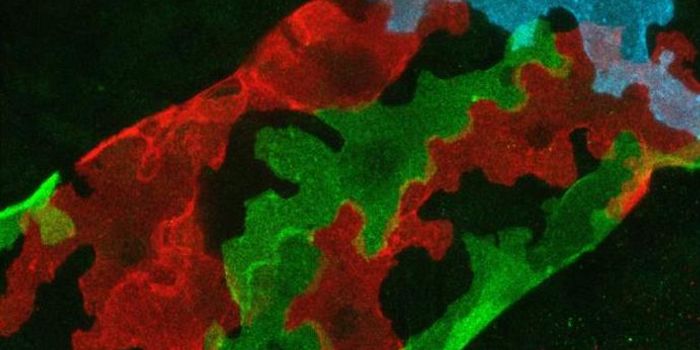By taking video of molecules inside of living tissue, scientists believe they have finally determined how melanosome transfer, an essential part of the proper pigmentation of skin, is accomplished; their
findings were published in the journal Scientific Reports. Skin pigmentation is crucial to shield the body from the harmful effects UV light. Melanin, made in the melanosome, guards the nuclei and thus the DNA, of keratinocytes, a cell type in the skin that does not make its own melanin. One of the videos from their research can be seen below; melanin is moving from the melanocytes to keratinocytes.
"Our study settles a long-standing debate about how melanin is transported from melanocytes, cells where it is synthesized, to keratinocytes, cells which it protects in the actual body," commented the leader of the work, Ryosuke Tadokoro of Kyoto University's Graduate School of Science.
In birds and mammals, the melanin contained in the melanosome has to be moved to a different part of the cell so that it can be distributed. This important process is a major area of interest in the fields of dermatology, cell biology and cosmetology.
"The melanin production process has been extensively studied, but since it needs to travel somehow, it's also crucial to understand the transport process in order to develop effective dermatological treatments," explained the senior author of the work, Yoshiko Takahashi of Kyoto University.
"In our experiments, we mimicked in three-dimensions how cells are actually organized. We also used chicken tissue, which is similar to ours in terms of how melanocytes are distributed throughout the skin." Many recent studies have suggested that the two-dimensional cell culture model often used in scientific research is not an accurate representation of cells living in three-dimensional, physiological structures. The prevailing theories have used two-dimensional models, as such this study does a lot to end the debate.
By utilizing a new fluorescence imaging technique that was developed in house, the researchers found that the membranes of melanocytes form blisters of sorts, and they function as packages for moving melanosomes. After the cargo gets loaded in, the vesicles pinch off and move off toward keratinocytes, which then consume them. After entering the cells, the melanosomes surround the nuclei to protect them from potential damage.
"Controlling skin pigmentation is crucial for protecting our skin from UV damage," said Takahashi, noting that vesicle formation and the necessary associated proteins are similar to to how cancer cells migrate to various areas of the body.
"This finding, while just a first step, could have significant implications in cosmetic contexts and in studies of depigmentation syndromes and skin cancer."
Another video from their research is shown, as membrane blisters or blebs pinch off and migrate.
Sources:
ScienceDaily via
Kyoto University,
Scientific Reports








